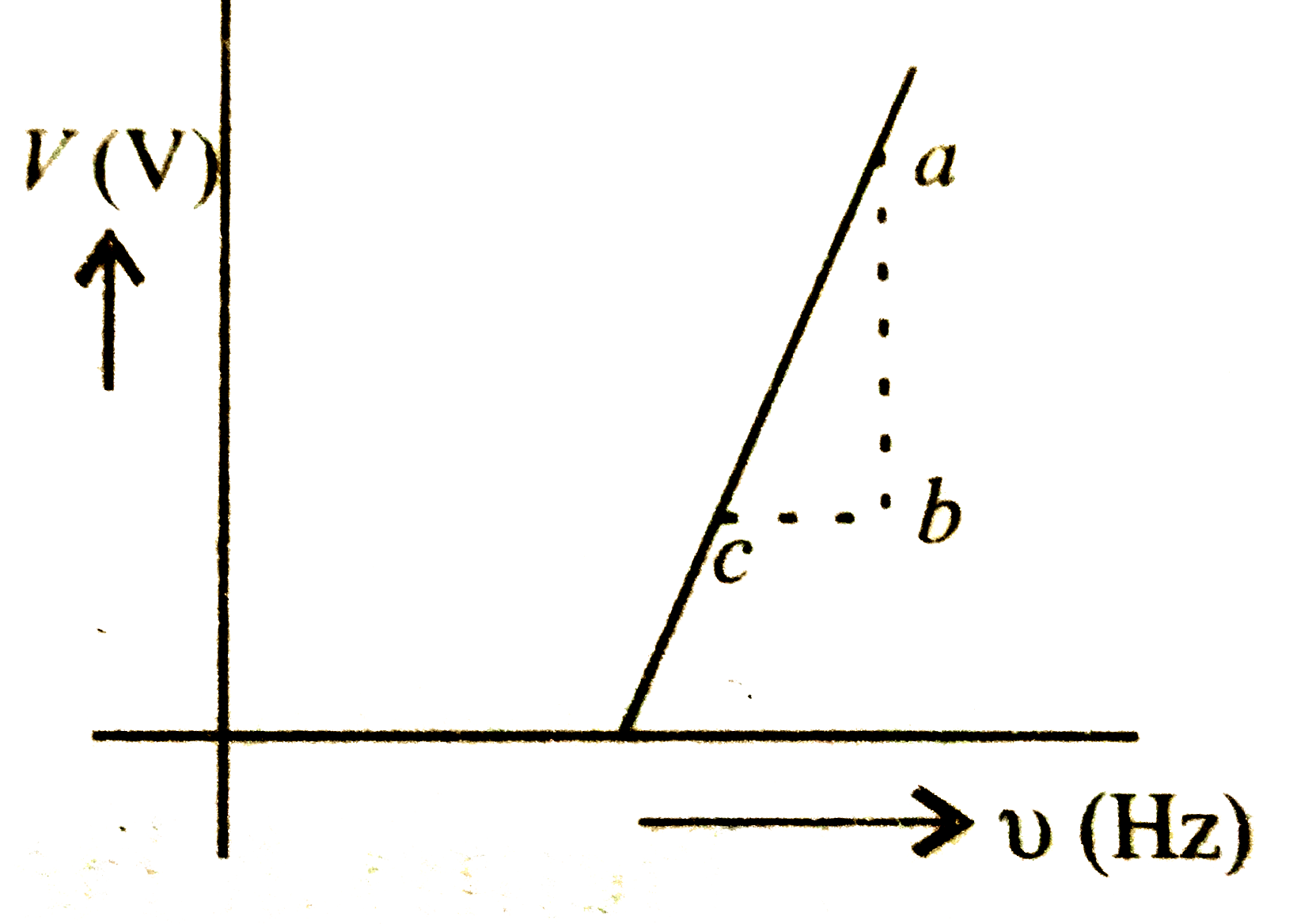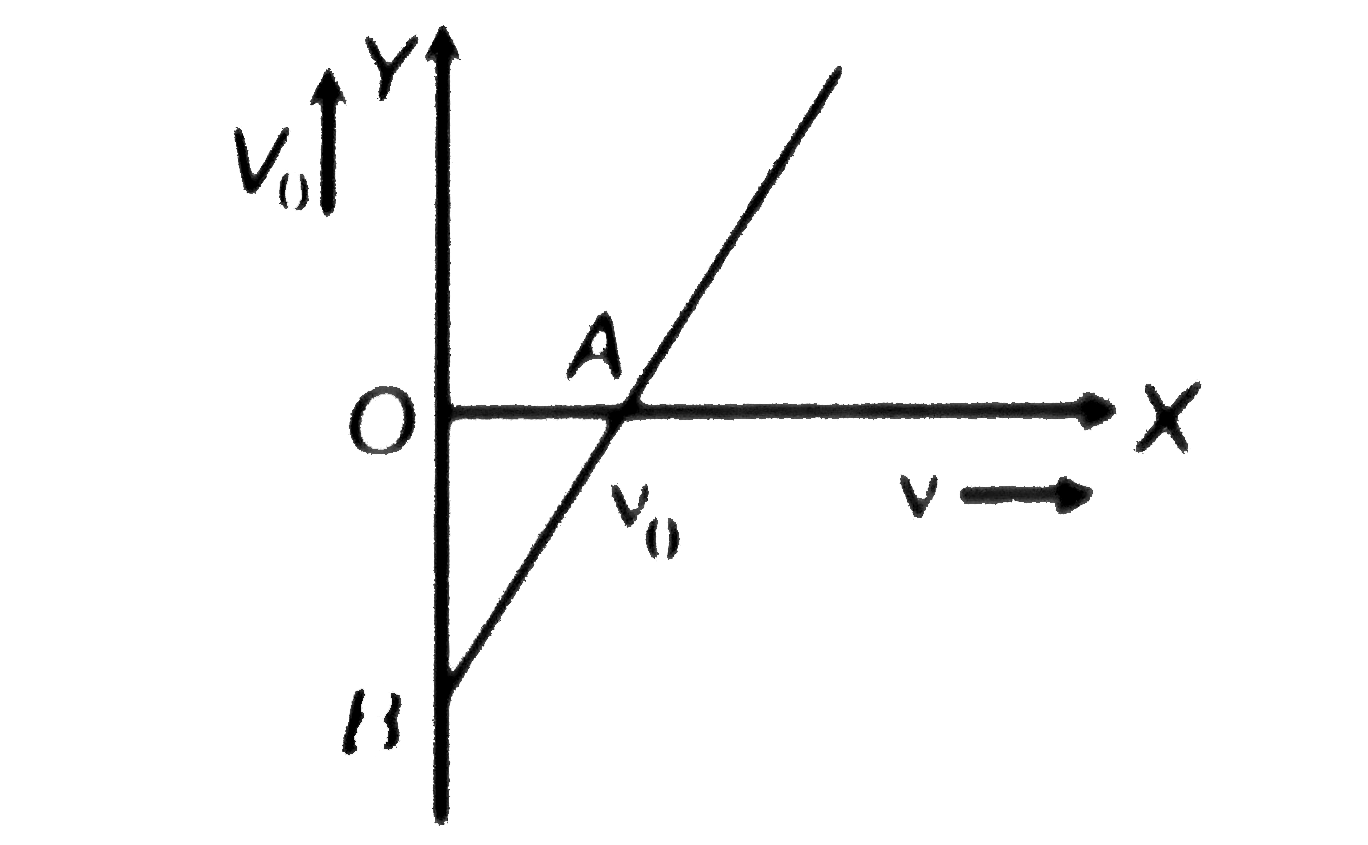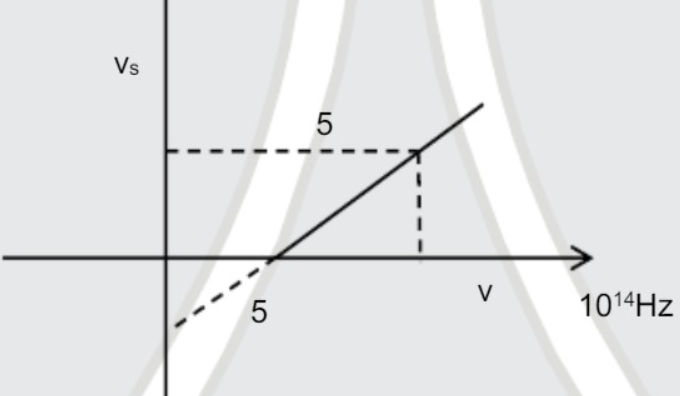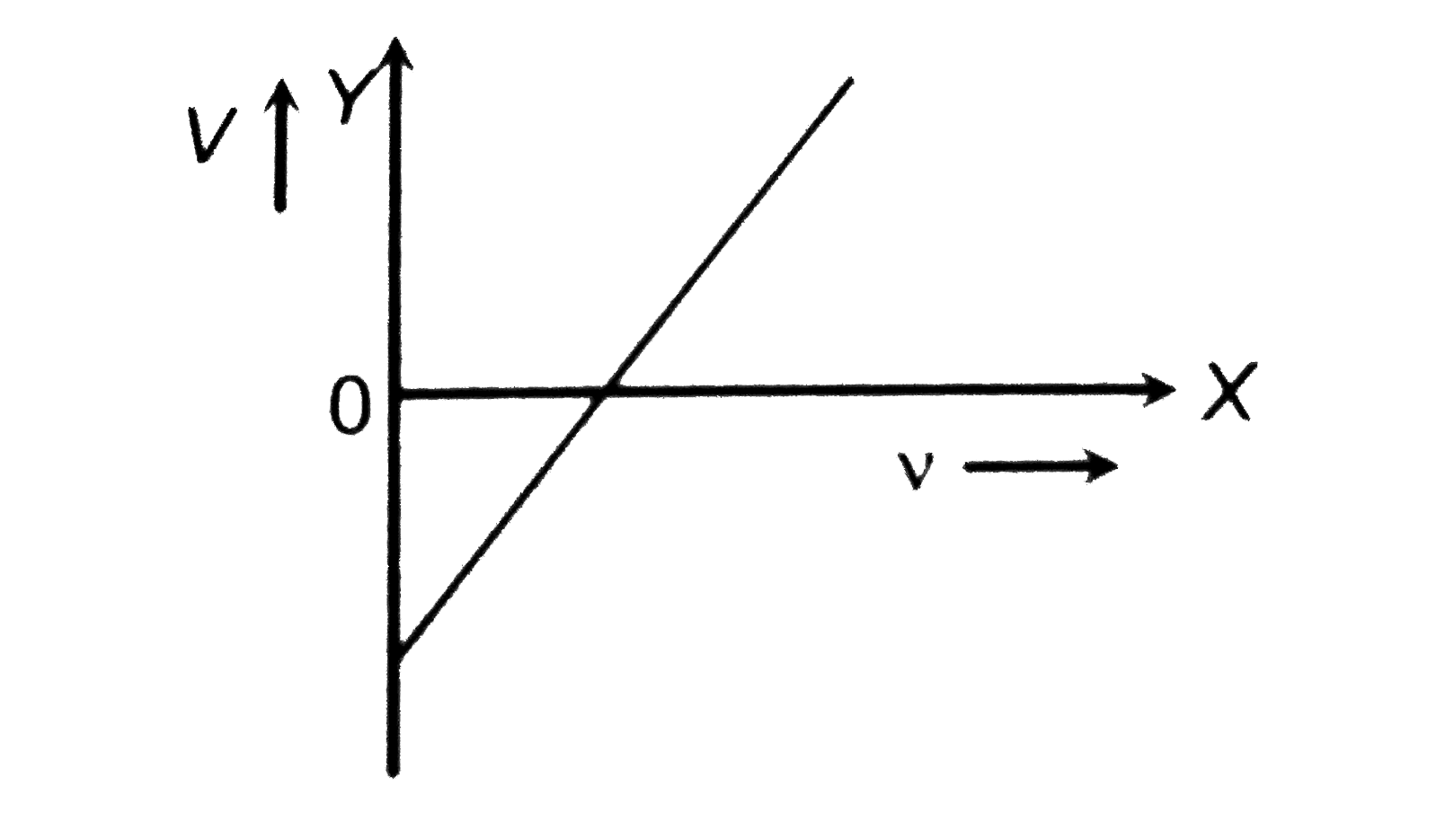In a photoelectric experiment, the graph of frequency v of incident light (in Hz) and stopping potential V (in V) is as shown in the figure. Planck's constant is (e is the elementary charge)

eabbc
ecbac
eacbc
eacab
The correct Answer is:A
(a) : According to Einstein's photoelectric equation
hu=(K.E)max+ϕ0
where ϕ0 is the Planck's constant
Also, (K.E.)max=eV
where e is the elementary charge, V is the stopping potential
eV=hu−ϕ0⇒V=hev−ϕ0e
Hence, the graph between V and v is a straight line and slope of this graph is given by
Slope =he . . . (i)
From the graph in the question Slope =abbc . . . (ii)
From (i) and (ii), we get, h=eabbc
Topper's Solved these Questions
- BOOK - NCERT FINGERTPS ENGLISHCHAPTER - DUAL NATURE OF RADIATION AND MATTER EXERCISE - PARTICLE NATURE OF LIGHT : THE PHOTON19videos
DUAL NATURE OF RADIATION AND MATTER
- BOOK - NCERT FINGERTPS ENGLISHCHAPTER - DUAL NATURE OF RADIATION AND MATTER EXERCISE - WAVE NATURE OF MATTER37videos
DUAL NATURE OF RADIATION AND MATTER
- BOOK - NCERT FINGERTPS ENGLISHCHAPTER - DUAL NATURE OF RADIATION AND MATTER EXERCISE - EXPERIMENTAL STUDY OF PHOTOELECTRIC EFFECT11videos
DUAL NATURE OF RADIATION AND MATTER
- BOOK - NCERT FINGERTPS ENGLISHCHAPTER - CURRENT ELECTRICITYEXERCISE - Assertion And Reason15videos
CURRENT ELECTRICITY
- BOOK - NCERT FINGERTPS ENGLISHCHAPTER - ELECTRIC CHARGES AND FIELDSEXERCISE - Assertion And Reason15videos
ELECTRIC CHARGES AND FIELDS
Similar Questions
Knowledge Check
- Question 1 - Select One
The rms value of potential difference V shown in the figure is
 AV0√3BV0CV0√2DV02
AV0√3BV0CV0√2DV02 - Question 2 - Select One
In photoelectric effect experiment, the slope of the graph of the stopping potential versus frequency gives the value of :
AheBhCehDhce - Question 3 - Select One
In a photoelectric experiment, if both the intensity and frequency of the incident light are doubled, then the saturation photoelectric current
Aremains constantBis halvedCis doubledDbecomes four times
In an experiment on photoelectric effect the frequency f of the incident light is plotted against the stopping potential V0. The work function of the photoelectric surface is given by ( e is the electronic charge)
 View Solution
View SolutionGraph between stopping potential and frequency of light as shown find the work function
 View Solution
View SolutionThe stopping potential V for photoelectric emission from a metal surface is plotted along Y - axis and frequency v of incident light along X - axis . A straight line is obtained as shown . Planck's constant is given by
 View Solution
View Solution
The stopping potential V for photoelectric emission from a metal surface is plotted along Y - axis and frequency v of incident light along X - axis . A straight line is obtained as shown . Planck's constant is given byView SolutionA student performs an experiment on photoelectric effect using two materials A and B. A plot of stopping potential (V0) vs freqency (v) is as shown in the figure.

The value of h obtained from the experiment for both A and B respectively is
(Given electric charge of an electron =1.6×10−19C)View Solution

